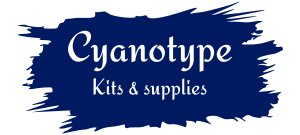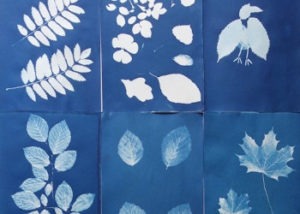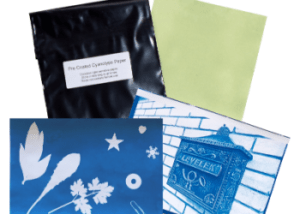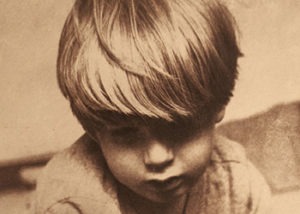How to cyanotype print on fabric.
Read MoreCyanotype Process
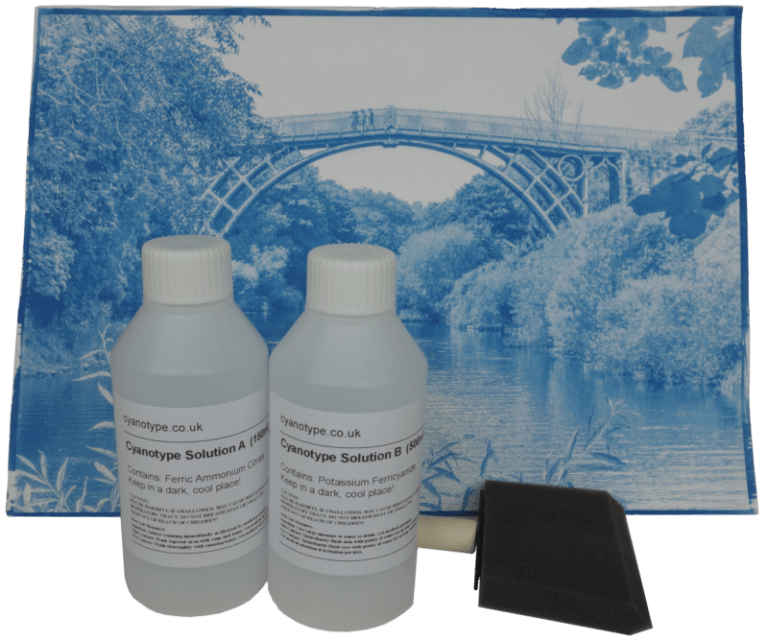
Cyanotype is an alternative (non-silver) photographic process. It is a traditional printing process that does not use silver gelatin paper and is commonly used in traditional darkroom printing. The Cyanotype, also known as a blueprint, is considered among the easiest of all the historical methods and ideal for beginners to start with and schools to teach. The characteristic of Cyanotypes is the blue colour of the print. In the cyanotype printing process you have to hand coat your paper or other materials with the sensitiser and after drying the sensitised paper is contact printed with printed negatives or objects under the sun or a UV (Ultra Violet) light source. Clearing is carried out in water, no fixing chemicals needed.
What you need to create cyanotype prints
- Either a cyanotype set, brush and paper that is thick enough to withstand the washing process and works well with cyanotypes
or - pre coated cyanotype paper
- glass and backplate of old picture frames
- objects that have interesting shapes or are semitransparent, leaves, plants etc.
- Water in a tub to wash out the prints after they have been exposed
- and sunshine (different times of the day will produce different shadows and different prints)
An outline of the cyanotype process
- Mix chemicals A & B in equal amounts.
- Coat your paper.
- Let it dry completely.
- Place your artwork on the coated paper and expose in sunlight or under UV lamp
- Wash out in water.
- Let it dry.
Related Tutorials
Cyanotype Ideas
We had some nice weather lately so we decided to do some cyanotype prints in...
Read MoreSun print paper
Our pre coated cyanotype paper is ideal if you want to try the cyanotype process....
Read MoreToning Cyanotypes
Short video and brief description of the cyanotype toning process.
Read More